54 F. high in the Twin Cities Tuesday.
38 F. average high for November 20.
27 F. high temperature on November 20, 2011.
24 F. average low for November 20 at KMSP.
-11 F. low temperature on November 21, 2011.
Home Sweet Home
I feel like a shill for the local Chamber of
Commerce. Look, when I tell people I'm from Minnesota their eyes get
big. I can almost hear them thinking "how do you live there?" They have
no idea how good it really is.
Our once-forbidding winters are shrinking - we
just had a 7 month boating season. The last 10 Novembers were all warm
enough for golf. In Minnesota? I have yet to dig out my coat.
I have not deviated from my winter outlook
("colder with some snow").
My hunch: another compressed, abbreviated
winter, crammed into December, January and February. I'm betting on
another early spring in 2013. By then, with any luck, the drought signal
will weaken, but I suspect our dry rut will deepen into December, as
wet storms detour south and east of Minnesota. I hope I'm wrong.
Today should rub you the right way: a hazy,
powder-blue sky, football-tossing weather by midday.
We may come close
to the all-time record high of 67F in 1990. The average high? 38 F.
A cold front kicks up up clouds & a chilling wind by Thursday afternoon; you may be shopping for a new parka on Friday.
A little slush is possible next Tuesday, but Old Man Winter continues to pull his punch. Stay tuned.
Thanksgiving Day Climatology In The Twin Cities. Here's an excerpt of a good post from
The Minnesota Climatology Working Group: "
Because
Thanksgiving Day occurs at the transition period between autumn and
winter, Thanksgiving weather can be balmy to brutal. A typical
Thanksgiving Day in the Twin Cities has high temperatures in the 30's
and at least a bit of filtered sunshine.
Having a mild day in the 50's on Thanksgiving Day is relatively
rare, looking at the historical record back to 1872. A maximum of 50 or
more has happened only ten times in 140 years, or about once every 14
years or so. The warmest Thanksgiving Day is a tie of 62 degrees set in
1914 and 1922. The mildest recent Thanksgiving Day is 59 degrees on
November 24, 2011. This was the fourth warmest Thanksgiving back to 1872
for the Twin Cities.
On the other side of the spectrum, it is common to have a high
temperature below 32. The average Thanksgiving Day temperature is right
around freezing. What about extremely cold Thanksgivings? Looking at
the past 140 years, It is a little more likely to have a minimum at or below zero on Thanksgiving Day, as it is to have a maximum of 50 or above. Below-zero
lows have occurred twelve times in the past 140 years. The coldest
Thanksgiving Day minimum temperature was 18 degrees below zero on
November 25, 1880. The coldest high temperature was one below zero on
November 28, 1872. The last time it was below zero on the morning of
Thanksgiving was in 1985, with eight below zero.
Measurable snow fell on 27 of the past Thanksgivings back to
1884, about every five years or so. The most snow that fell on
Thanksgiving was five inches in 1970. The last time there was measurable
snow on Thanksgiving was in 2007 with .2 (two tenths of an inch) of
snow. Historically, about one in three Thanksgivings have at least one inch of snow on the ground. The deepest snow pack is a tie with 1921 and 1983, both with 10 inches on the ground by Turkey Day."
Thanksgiving Day Weather: Remarkably Quiet. Dry,
quiet, unusually mild weather will be the rule over most of the USA east
of the Rockies, a few spotty showers from St. Louis to Chicago. A
colder front pushes into Montana and the Dakotas, but the 18z forecast
map (above) could be right out of early or mid October. Model guidance:
WSI.
Two More Mild Days - Then Reality Sets In. The
latest ECMWF guidance for the Twin Cities suggests highs topping 60
today, near 60 tomorrow, then 30 degrees colder on Friday. Factoring in a
20-25 mph wind it will feel 40-45 F. colder b "Black Friday". Dry
weather persists over the next week, the chance of light snow next
Tuesday seems to be fading.
The Big Tumble. Welcome to Minnesota. If you don't
like the weather, don't complain, just wait a few hours - it'll change.
After peaking in the low to mid 60s today temperatures fall off by
Thursday afternoon. By Friday there will be NO doubt in your mind that
the sun is as high in the sky as it was the third week of January.
Graphic: Iowa State.
Friday: A Whiff Of Winter. Projected wind chills
show teens and 20s from the Dakotas into Minnesota, Wisconsin and Iowa
by Friday. If you're shopping you'll need a heavy jacket or coat. After a
recent mild spell I'm a little worried that some power-shoppers may not
take the cold seriously and may come home with numb fingers and toes.
Map: Ham Weather.
Expected Total Snowfall By Friday Evening. A symptom
of our drought, Friday's cold front will whip up plenty of cold, but
precious little moisture. Any significant snow will track north of the
U.S. border, maybe a coating by Friday evening from Duluth to Marquette,
Michigan - heavier snow above 6,000 feet over the Pacific Northwest and
Northern Rockies. Map: WSI RPM Model.
Drought Shows Little Sign Of Easing. Worried about plants, trees and shrubs with our ongoing drought? Here is some good information from
The Garden City Telegram: "...
spruce
trees in particular have been hard hit by the dry weather that has
plagued Kansas for most of the past year, Upham said. New plantings and
new trees are the most are the most vulnerable to these dry conditions,
he said, because their root systems haven't had a chance to extend deep
into the ground. For trees to benefit most from watering, he said, the
soil must be soaked as much as a foot below the surface. "The rooting
hairs that actually take in water close to the surface have gone
dormant," Upham said. "You need to get that (water) down to where there
are live feeder roots that can pick it up."
* the latest NOAA U.S. Drought Monitor is
here.
Drought Conditions Threaten Mississippi River Transport.
There just isn't enough water in the Mighty Mississippi, the result of
one of the worst droughts since the 1930s. Details from
The Epoch Times: "
Persistent
drought conditions in the upper Midwest are threatening the nation’s
waterways, with the mighty Mississippi River so low that barge traffic
has been affected and may be forced to halt. Over 90 barges have been
either stranded or grounded due to low water in recent weeks, according
to the Waterways Council Inc. (WCI),
a public policy organization representing shippers and ports. Low water
levels are also likely to increase due to continuing dry conditions,
compounded by the actions of the U.S. Army Corps of Engineers, who have
orders to reduce water flow from the Missouri River into the
Mississippi..."
Photo credit above: "
A Coast Guard boat patrols in the
foreground as a barge makes its way down the Mississippi River Friday,
Nov. 16, 2012, in St. Louis. A top Corps of Engineers official has
ordered the release of water from an upper Mississippi River reservoir
in an effort to avoid closure of the river at St. Louis to barge traffic
due to low water levels caused by drought." (AP Photo/Jeff Roberson)
How To Build A More Resilient Power Grid. Here's another thought-provoking article from
Scientific American: "
In
the days leading up to Hurricane Sandy's destructive march on the East
Coast, utilities warned customers to prepare for widespread outages
and potentially extensive power failure. The question was not if the
grid would fail, but to what extent. The storm highlighted an already
well-known problem: The U.S. power grid is vulnerable to extreme weather. As officials from New York to Venice,
Italy, have acknowledged in recent weeks, climate change is likely to
increase the prevalence of such weather. And according to analysts and
outside groups working on the problem, there is no one-size-fits-all
remedy that can insulate the ailing grid against an escalation of the
elements..."
Photo credit above: "
Technology such as smart meters and micro-grids can help the vulnerable U.S. electric grid weather extreme storms."
Image: Flickr/Christopher Schoenbohm
Vetoing Business As Usual After The Storm.
Rebuilding in high-risk coastal areas after each and every hurricane is
not only futile, but expensive, considering (all) U.S. taxpayers are
picking up the tab. Here's an excerpt of a story at
The New York Times: "
Not a month after Hurricane Sandy
there’s a rough consensus about how to respond. America is already
looking to places like London, Rotterdam, Hamburg and Tokyo, where sea
walls, levees and wetlands, flood plains and floating city blocks have
been conceived. New York clearly ought to have taken certain steps a
while back, no-brainers after the fact. The Metropolitan Transportation
Authority ought to have installed floodgates and louvers at vulnerable
subway entrances and vents. Consolidated Edison should have gotten its
transformers, and Verizon its switching stations, out of harm’s way,
and Congress should have ordered the Army Corps of Engineers to study
the impact of giant barriers to block parts of the city from the sea..."
Photo credit above: "
One of the largest piles of storm
debris at the Jersey shore is shown in this Nov. 15, 2012 photo in Long
Branch N.J. Superstorm Sandy created tons of debris that towns in New
York and New Jersey are still struggling to dispose of weeks later.
Three weeks in, the round-the clock effort to remove storm rubble has
strained the resources of sanitation departments and landfill
operators, and caused heartaches and headaches for thousands of
families." (AP Photo/Wayne Parry)
Outsmarting The Surge. How do we build more
surge-resilient communities along the coast? Is it even theoretically,
and cost-effectively possible to do so? Here's an excerpt of a terrific
article at
Time Magazine: "
After
Hurricane Sandy hurled the Atlantic at the Northeast coast on Oct. 29
and 30, New York Governor Andrew Cuomo returned from touring a
shell-shocked New York City to face reporters. The storm surge had
inundated lower Manhattan, Staten Island and parts of Brooklyn and
Queens. It had obliterated the New Jersey shore. Across more than a
dozen states, from North Carolina to Maine and as far west as Michigan,
it left more than 50 people dead and more than 8 million without power,
and it likely caused more than $20 billion in damage. Sandy, a seemingly
minor Category 1 hurricane, was a major catastrophe..."
Photo credit above: Andrew Quilty / Oculi for Time.
Hurricanes And Climate Change. An estimated 90% of
warming has gone into the world's oceans. Are those (increasingly warm)
ocean waters helping to spike the hurricanes that do get going? Here's a
clip from
PBS NOVA: "
When
it engulfed swaths of coastal New York and New Jersey, Hurricane Sandy
became an instant symbol of a new age of extreme weather fueled by
climate change. New York Mayor Michael Bloomberg endorsed President Obama to nudge him to address climate. Bloomberg Businessweek summed up this sentiment with its Sandy cover story, "It's Global Warming, Stupid."
But is it, really? As one of the most extreme kinds of extreme
weather, hurricanes already pose a mortal threat to anyone living along
the Atlantic and Gulf Coasts and other tropical cyclone trouble spots.
If we face the prospect of routine superstorms amped up by the extra
heat and moisture from global warming—or, in the case of Sandy, merging
with other systems into freakish weather hybrids—that's a truly
apocalyptic threat...."
NOAA Scientist; 80% Percent Chance Recent Heat Records Due To Climate Change. Is it possible to connect the dots and link attribution to a warmer atmosphere? The Washington Post's
Capital Weather Gang has the story - here's an excerpt: "Is climate change giving our weather just a little nudge to make setting heat records -
like Washington, D.C. just experienced - vastly more likely? That’s the opinion of one NOAA scientist. Meet
Martin Hoerling,
a research meteorologist at NOAA’s Earth System Research Laboratory. I
recently participated with him and several other climate scientists in
a
Google Hangout conversation.
What Hoerling had to say about climate change and record-setting
temperatures was fascinating. He makes a compelling case that
human-caused climate change isn’t causing heat waves, but - in many
instances - adding to their intensity. Consider these excerpts from his
commentary, about 34-38 minutes into the 60 minute panel discussion.
“....
the globally averaged temperature of the planet has risen
beyond any doubt beyond where you would expect ... with natural
variability alone...”
About Face: U.S. Tornado Activity Near Low Point In Modern Record. The always prolific, always-interesting
Capital Weather Gang summarizes America's tornado situation for 2012. It turns out the drought and excessive heat had at least one silver lining: "
After
one of the busiest years for tornadoes in 2011, tornado numbers in
2012 have come crashing down to historic lows. In 2011, there were 1692
twisters - second most on record. This year, only 882 tornadoes have
touched down. (Tornado records date back to 1950*). “[W]e are
approaching a theoretical minimum in the annual tornado count for the
modern era,” said Greg Carbin, warning coordination meteorologist at
the National Weather Service Storm Prediction Center in Norman, Ok.
What’s especially remarkable about the year’s depressed numbers is that
tornado activity got off to a red-hot start. Through mid-April,
tornado counts were highest on record. But then, an extended tornado
drought struck and the count ranking plummeted..."
Graphic above courtesy of
SPC, NOAA's Storm Prediction Center.
Weather Data From Nation's Largest Wind Farms Could Improve U.S. Models, Forecasts.
Here's one way to initialize models with higher quality (real-time)
weather data - tap the network for wind farms around the U.S. - a
brilliant idea described in this
phys.org article: "
NOAA
now has data sharing agreements with Iberdrola Renewables of Portland,
Ore., and NextEra Energy Resources of June Beach, Fla. - the country's
two largest generators of wind-generated electric power, according to
the American Wind Energy Association. The companies will provide
valuable weather observations from instrumented towers in their wind
farms and wind speed data from instruments atop wind turbines. Since
2011, Excel Energy of Minneapolis, Minn. has provided similar
observations to NOAA...."
Winter (Still) On Hold. Under a partly sunny sky
temperatures were 15-20 F. above average yesterday, highs ranging from
48 at St. Cloud to 54 in the Twin Cities, 56 at Redwood Falls, a balmy
63 at Canby.
Paul's Conservation Minnesota Outlook for the Twin Cities and all of Minnesota:
TODAY: November daydream. Mild sun. Winds: SW 10. High: 63. Record high: 67 in 1990.
WEDNESDAY NIGHT: Partly cloudy, still
unseasonably mild. Low: 47 (low predicted to be more than 10 degrees
higher than the average low for November 22)
THANKSGIVING DAY: AM sun, PM clouds with a passing shower - turning colder by late afternoon. Winds: W 15-25. High: 57
"BLACK FRIDAY": Wintry sting. Mostly cloudy and gusty, feels like 15 F. Low: 27. High: 33
SATURDAY: Sunny, less wind. Still brisk. Low: 19. High: 35
SUNDAY: Fading sun, good travel weather expected. Low: 22. High: 37
MONDAY: Clouds thicken. Light snow possible at night. Low: 23. High: 33
TUESDAY: Light snow tapers. Late clearing. Low: 20. High: 30
Climate Stories...
History Repeats Itself. Here's an excerpt from a
PBS companion piece
to Ken Burn's excellent 2-part series, The Dust Bowl, which is must-see
TV. See if this rings a bell with current concerns about what we're
doing to our (global) environment? "...
As historian Robert Worster
wrote, “The ultimate meaning of the dust storms of the 1930s was that
America as a whole, not just the plains, was badly out of balance with
its natural environment. Unbounded optimism about the future, careless
disregard of nature’s limits and uncertainties, uncritical faith in
Providence, devotion to self-aggrandizement – all these were national
as well as regional characteristics.”
Climate Change Made Sandy Worse. Period. Chris Mooney explains at
Mother Jones; here's an excerpt: "
Superstorm
Sandy—and its revival of the issue of climate change, most prominently
through Michael Bloomberg's sudden endorsement—probably aided
President Obama's reelection victory last night. But at the same time,
there has been a vast debate about the true nature of the storm's
connections to global warming (as well as plenty of denialism regarding those connections). In fact, there has even been the suggestion,
by cognitive linguist George Lakoff, that if we all stopped thinking
about causation as something direct (I pushed him, he fell) and rather
as something systemic (indirect, probabilistic), then we really could
say with full accuracy that global warming caused Sandy. Systemically...."
Photo credit above: "
Flooding in Breezy Point, Queens."
Brett Brownell, Mother Jones
World Bank Climate Report Says "Turn Down The Heat" On Warming Planet. This report created quite a stir; here is the first of several reports from Reuters and
Huffington Post: "
All
nations will suffer the effects of a warmer world, but it is the
world's poorest countries that will be hit hardest by food shortages,
rising sea levels, cyclones and drought, the World Bank said in a
report on climate change. Under new World Bank President Jim Yong Kim,
the global development lender has launched a more aggressive stance
to integrate climate change into development. "We will never end
poverty if we don't tackle climate change. It is one of the single
biggest challenges to social justice today," Kim told reporters on a
conference call on Friday. The report, called "Turn Down the Heat,"
highlights the devastating impact of a world hotter by 4 degrees
Celsius (7.2 Fahrenheit) by the end of the century, a likely scenario
under current policies, according to the report. Climate change is
already having an effect: Arctic sea ice reached a record minimum in
September, and extreme heat waves and drought in the last decade have
hit places like the United States and Russia more often than would be
expected from historical records, the report said..."
Global Warming Will Devastate The Poorest Countries, World Bank Study Finds. More details from
Think Progress:
- Extreme heat waves, that without global warming would be
expected to occur once in several hundred years, will be experienced
during almost all summer months in many regions. The effects would not
be evenly distributed. The largest warming would be exptected to
occur over land and range from 4° C to 10° C. Increases of 6° C or
more in average monthly summer temperatures would be expected in the
Mediterranean, North Africa, Middle East and parts of the United
States.
- Sea level-rise by 0.5 to 1 meter by 2100 is likely, with higher levels also possible. Some
of the most highly vulnerable cities are located in Mozambique,
Madagascar, Mexico, Venezuela, India, Bangladesh, Indonesia, the
Philippines and Vietnam.
Report. The World Bank report is
here. Another perspective from
The Hill.
Why Climate Deniers Have No Scientific Credibility - In One Pie Chart. The full story from
desmogblog.com.
How To Profit From Global Warming. If you don't
factor water struggles, along with a morphing (stormier) climate into
your portfolio you may be doing your investments a long-term disservice.
As I've been saying for 20 years, climate change is a threat, and a
massive opportunity. Here's a clip from
Seeking Alpha: "
Based
on the global warming hype you would probably think that it's a
diabolical thing to end all life and bring on the end of days. We
constantly hear about all of the negative effects, but does anyone talk
about the positive effects? Of course our masters in Washington,
London, Brussels, and Beijing will never spoil a good narrative by
giving any mention whatsoever to such needless complexities. But in
fact it is a complex situation and if we think about it for a while we
can find positive effects and even ways to profit from global warming..."
World's Largest Investors Call For Climate Change Action.
When people start to notice their investments are being routinely,
consistently impacted and battered by a changing climate, some of the
deniers may eventually see the light. Some (proactive, enlightened)
companies are already trying to get out ahead of the curve, as reported
by Reuters and
Huffington Post: "
A
coalition of the world's largest investors called on governments on
Tuesday to ramp up action on climate change and boost clean-energy
investment or risk trillions of dollars in investments and disruption
to economies. In an open letter, the alliance of institutional
investors, responsible for managing $22.5 trillion in assets, said
rapidly growing greenhouse gas emissions and more extreme weather were
increasing investment risks globally. The group called for dialogue
between investors and governments to overhaul climate and energy
policies. The call comes less than a week before major U.N.
climate talks in Doha, Qatar. Almost 200 nations will meet in Doha
from Nov. 26 to Dec. 7 to try to extend the Kyoto Protocol, the
existing plan for curbing greenhouse gas emissions by developed
nations that runs to the end of 2012..."
200 Investment Firms Issue A Warning On Climate Change. Business Insider has more details
here.
Iowa Scientists: Drought A Sign Of Climate Change. Here's the intro to a story from AP and
ABC News:
"This year's drought is consistent with predictions that global climate
change would bring about weather extremes including more frequent
droughts, said a report released Monday. The Iowa Climate Statement
updates the 2010 report, reflecting the year's lingering drought and
the belief that it signifies what many scientists have predicted —
increasing instability in weather patterns will lead to extremes during
both wet and dry years. Iowa has experienced such extremes in recent
years; in 2008, flooding caused an estimated $10 billion in damage,
making it the worst disaster in the state's history. More broadly, this
year's drought brought about parched croplands, reducing corn yields
across the nation's Grain Belt, from South Dakota to Indiana. And last
month's Superstorm Sandy — a combination of a hurricane, a wintry storm
and a blast of arctic air — devastated parts of the Eastern seaboard
and killed more than 100 people...."
U.S. Carbon Emissions: 2012 Levels At 20 Year Low.
There is some good news, at least here in the USA. The combination of a
severe recession, increased CAFE mileage standards and a transition away
from dirty coal toward cleaner natural gas has resulted in some
promising trends here in the USA. Of course this is a global problem, so
emissions in China and India (which are not going down) continue to be a
real problem.
Huffington Post reports: "
In
a surprising turnaround, the amount of carbon dioxide being released
into the atmosphere in the U.S. has fallen dramatically to its lowest
level in 20 years, and government officials say the biggest reason is
that cheap and plentiful natural gas has led many power plant operators
to switch from dirtier-burning coal. Many of the world's leading
climate scientists didn't see the drop coming, in large part because it
happened as a result of market forces rather than direct government
action against carbon dioxide, a greenhouse gas that traps heat in the
atmosphere. Michael Mann, director of the Earth System Science Center at
Penn State University, said the shift away from coal is reason for
"cautious optimism" about potential ways to deal with climate change. He
said it demonstrates that "ultimately people follow their wallets" on
global warming..."
The UP Side Of Global Warming. Not sure about this
one, but I'm including it to show one more example of the "glass half
full" mentality that's out there in the popular media. It remains to be
seen whether thawing permafrost in northern Canada and shifting weather
patterns up north will be a good thing long-term. Here's an excerpt of a
story at
canada.com: "
When
it comes to guilty pleasures, there is a new one in Canada -- walking
out the door on a winter morning and instead of shivering in bitter
cold, basking in unusually warm and pleasant weather. The negative
effects of global warming have been well-documented by activist
politicians and scientists such as Al Gore and David Suzuki, but the
positive effects have so far received less attention. But a group of
global-warming experts, made up mainly of university economists and
anthropologists, is pushing the notion that global warming might not be
an unmitigated disaster, especially for certain northerly regions, such
as Canada, Russia and Scandinavia..."
What's At Stake With Climate Change. In the wake of Sandy here's a
thoughtful post from Chris Hayes, host and moderator of MSNBC's "Up" program: "
At
about 8 p.m. on Monday night the east facing windows in my Brooklyn
apartment started to bubble and buckle inward in a deeply unsettling
way. The wind howled and we thought it prudent to move ourselves away
from the wall exposed to the elements. But that one moment of sharp
anxiety was as bad as things got. We were lucky: Our power never went
out, and my neighborhood is on high enough ground that it wasn’t
flooded by the storm surge. There were a few downed trees that took out
parked cars, but that was about it. Just a few neighborhoods over, a
young couple named Jessie Streich-Kest and Jacob Vogelman were out
walking their dog at some point that evening when they were struck by a
falling tree and killed. They are two of the estimated 109 people
who’ve died due to the storm here in the U.S., a death toll that is
mercifully lower than one might anticipate given the scale of the
damage. The destruction is most evident here in New York City in Staten
Island, in Queens’ devastated coastal neighborhoods and in the
powerless precincts of lower Manhattan, where cars roll through
intersections without street lights, and commuters trundle over the
bridges, walking over an east river whose waters overflowed its banks,
filling the subway tunnels that connect the boroughs, and rendering
much of the system unusable..."
Global Warming Could Lead To Runaway Ice Cap Meltdown.
One thing we've discovered (among many) is that most natural systems
aren't linear - things don't tend to move in a straight line. That's why
climate scientists talk about tipping points, when forcings cause
dramatic changes in a short period of time. We saw record melting of the
Arctic this year; ice levels have not been this low in recorded human
history. Where will it go?
The Summit County Citizens Voice examines the trends and takes a look at the future; here's an excerpt: "
A
new study confirms the strong links between global temperatures,
melting ice and sea level and suggests that sea level responds more
quickly that previously believed, probably because of the feedback
warming effect of open water. Ice volume changes during ancient times
can be reconstructed from sea-level records, but detailed assessments
of the role of ice volume in climate change is hindered by inadequacies
in sea-level records and/or their timescales. Now, a research team led
by Eelco Rohling, Professor of Ocean and Climate Change at the
University of Southampton, has developed a new way to date sea level
rise and accurately link it with changes in ice volume. The scientists
were able to apply the new dating method throughout the entire last
glacial cycle (150,000 years), which resulted in an unprecedented
continuous sea-level record with excellent independent age control. By
comparing the ice-volume fluctuations with polar temperature
reconstructions from the Greenland and Antarctica ice cores, the
scientists found that changes in temperature and ice volume/sea level
are closely coupled with a response time lag of only a few centuries.
This timing relationship was previously unknown, and it reveals a very
fast response between global temperature and ice volume and sea level..."



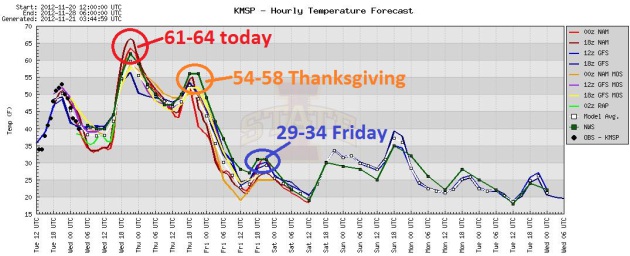
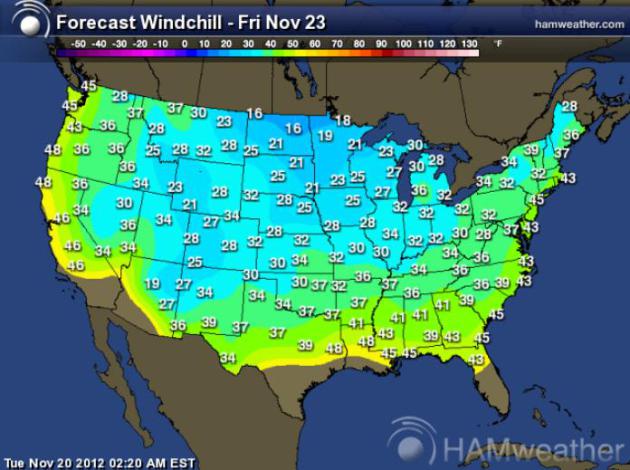
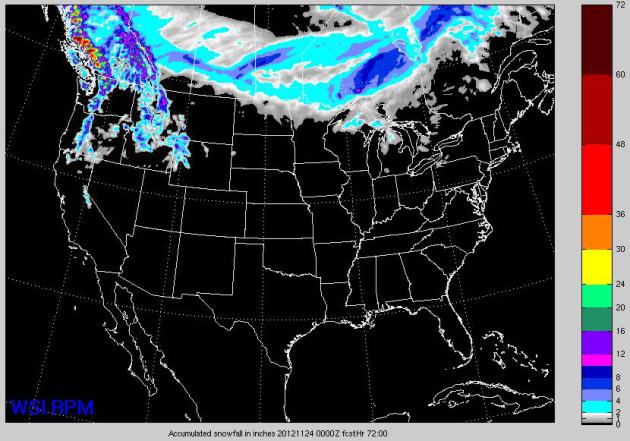
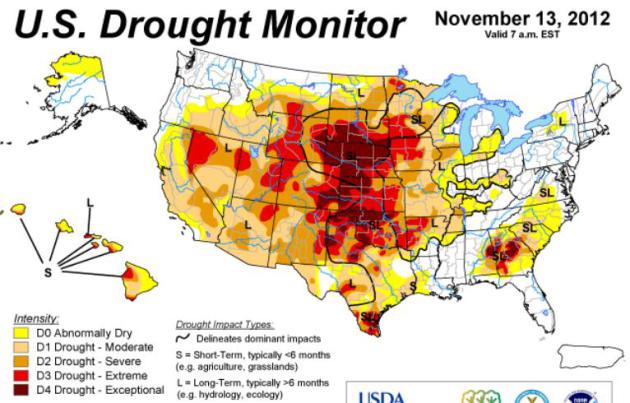

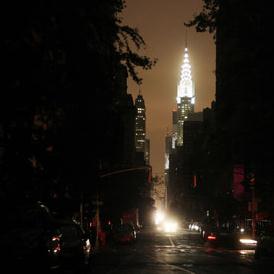
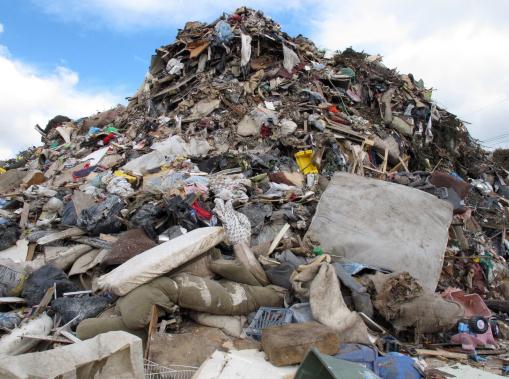


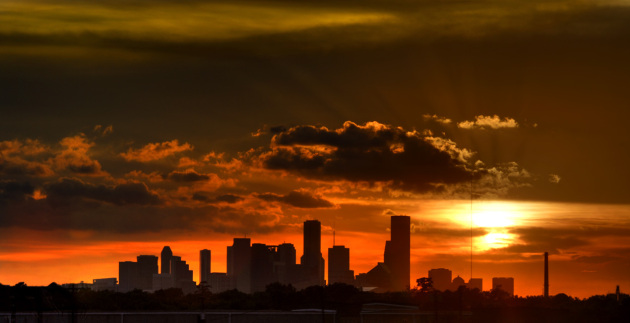




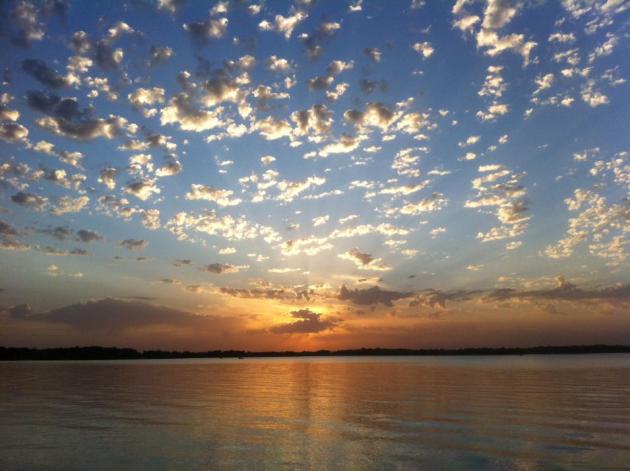
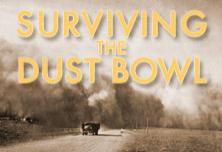
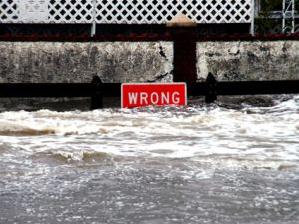
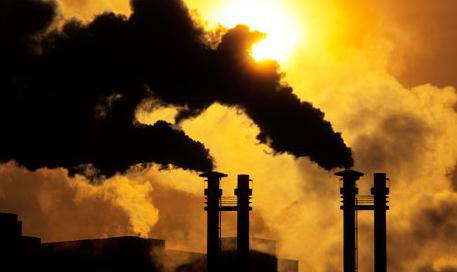
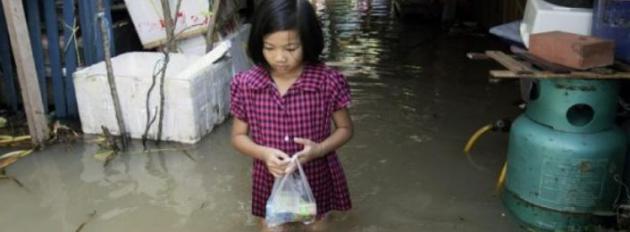









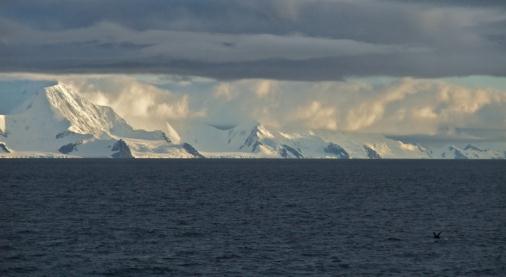
No comments:
Post a Comment